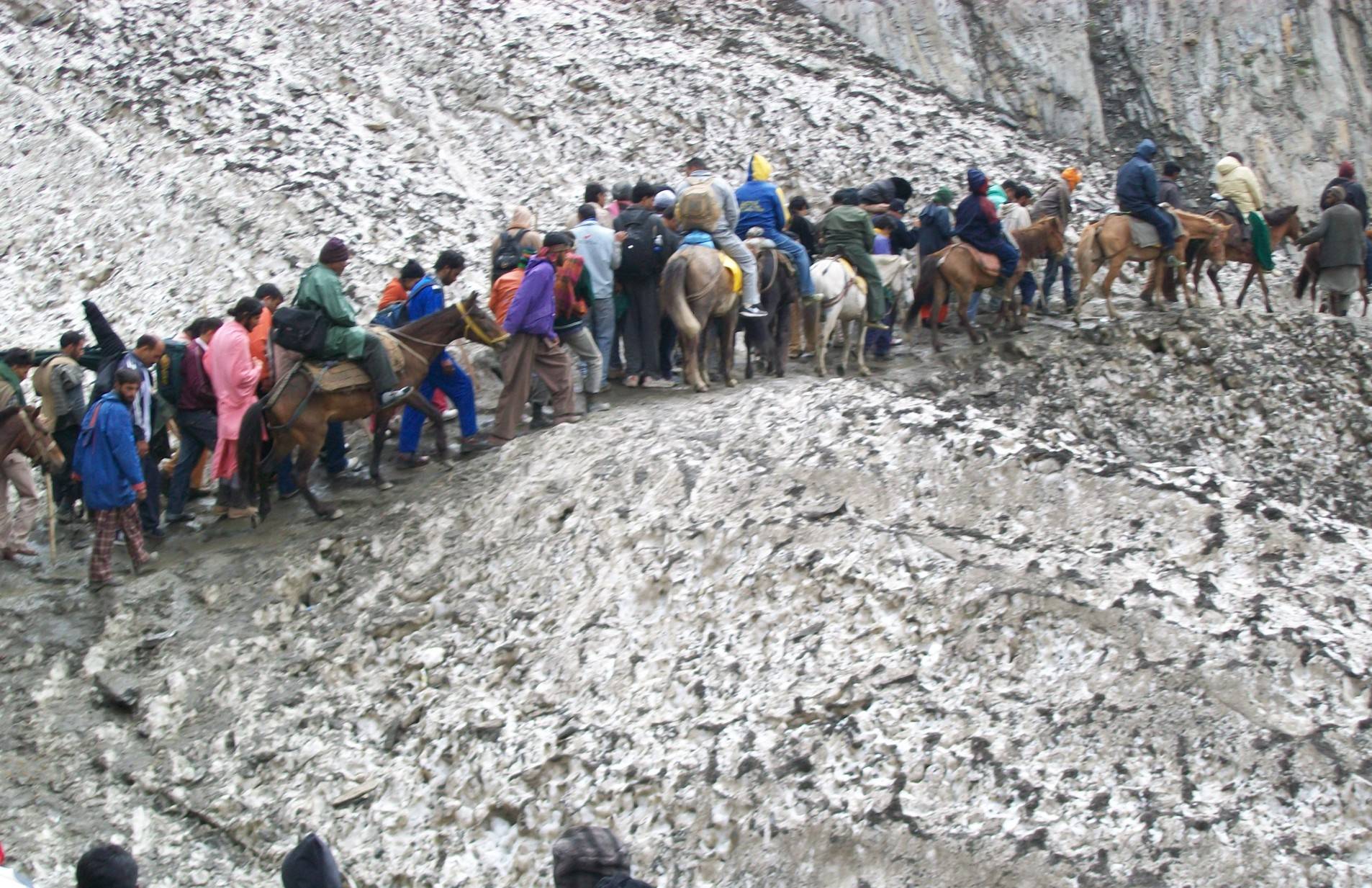Published in Guardian Travel
October 2009
For our three-day trek, 14,000ft up in the Indian Himalayas in Kashmir, we’d come prepared with waterproofs, walking boots, sleeping bags and a tent. Guru Shanker Abharshila, on the other hand, had only a grubby white robe, plastic flip-flops and a small bag of apples. That, and a wooden board strung with rope on which he would prop himself up to sleep (a Hindu sadhu, or holy man, he had made a vow to Lord Shiva that he would not sit or lie down for 12 years). Others, including stooped women in their 80s, went barefoot, and there was even a one-legged sadhu who overtook us on crutches. This was no ordinary mountain walk; we were on the annual pilgrimage, or yatra, to the Amarnath cave.
There lies the Shiva-lingam, an ice stalagmite that forms in the cave between May and August. For Hindus it’s a manifestation of Lord Shiva, who chose the cave to reveal the secret of eternity to his consort Parvati. Since time immemorial devotees have been making the arduous 30 mile trek, zig-zagging up steep mountainsides and crossing streams of glacial melt-water to pay homage to the miraculous appearance of their god. Pilgrim numbers have peaked at 500,000 in recent years. Unfortunately, the Shiva-lingam has not always been there to greet them. Due to both global warming and the sheer body heat of so many people, the ice stalagmite has failed to form, or else melted unnaturally early.
In the town of Pahalgam, two hours from Srinagar, we organised a luggage pony and guide for £30 for three days (food and tents are provided free on the trek) then took a taxi to Chandanwari, one of the yatra’s main starting points.
The first leg of the journey is one of the toughest, a 2,000ft scramble up a steep, rocky hillside, accompanied by throngs of orange-clad pilgrims. The slopes echo with cries of “Jai Shiva shankar!” and “Bom bom bhole!” (“hail Lord Shiva!”, “all hail!”). At the summit at Pissu Top, we sheltered beneath a plastic awning, sharing a hookah and Kashmiri chai with pilgrims, dreadlocked sadhus and soldiers.
A shock awaited us at the lake of Sheshnag, our first designated camping point. I’d expected something resembling a lakeside hippy festival. But instead we were greeted by razor-wire, dilapidated pre-fabs looming out of the mist, rows of sodden khaki tents and mounds of plastic waste.
Once settled in, our spirits improved. There was a langar (a free food tent) offering dhal, rice and chapatis, and we were hustled to the front of Hindu prayers to have our foreheads liberally smeared with red kumkum powder.
The second day’s trek was easier – the clouds finally burnt away, revealing snowcaps and glaciers on higher peaks, the minute scale of this human journey against the impossibly vast Himalayas. We understood why these are regarded as the literal abode of the gods.
Descending a long, curving valley, we refreshed at another langar at Poshipathri, then continued to the final campsite. directly beneath the holy cave. The site can only be described as a glacial shanty town. It had been occupied for almost two months, and looked as if the cave’s wide mouth had disgorged a tide of tarpaulins – temporary dwellings and stalls selling glitzy religious tat.
But amazing hospitality compensated for less salubrious aspects. We stayed inside the main langar, presided over by a stern-looking man propped up in bed with an enormous trident, and a friendly soldier warned us of the dangers of landslides and bears, who emerge after dark, apparently, to eat chapatis.
First thing the next morning: at last, the holy cave. Sadhus lined the path, sitting by little fires, smeared with ash, necks hung heavy with charms and medallions, dutifully getting stoned.
Inside the cave were bells, flowers, incense, statues of gods. But no Shiva-lingam. It had melted weeks ago. All we could see beyond the yellow guardrail was the rock at the back of the cave. But the pilgrims still gave offerings, revering the space where the stalagmite had been. The atmosphere was hushed, respectful, awed. Our new friend Salil Kumar explained why it’s still sacred. “Even though there is no Shiva-lingam, there is holy snow. Even if no holy snow, there is holy water.”
Does Salil connect the melting with human activity? “Of course. We breathe in oxygen and breathe out carbon dioxide. Also, we give out body-heat. But it’s beyond our control. It is the will of Lord Shiva.”
This echoes what other pilgrims told me. Many are aware of climate change, but few see any connection to what’s happening in the cave. The lingam has never been explained, and the divine – by definition – goes beyond human understanding. “No geologist, no scientist has ever found the source,” says Salil. “It’s a holy mystery.”
Salil assures us that in this holy place all wishes will be granted, for the betterment of humankind. One of my wishes is that Amarnath will be saved from pollution and tourism, religious or otherwise. It would be a tragedy if ever-increasing throngs, in their devotion, destroy the very thing they love.
Image by Pankaj goutam (via Wikimedia Commons)


